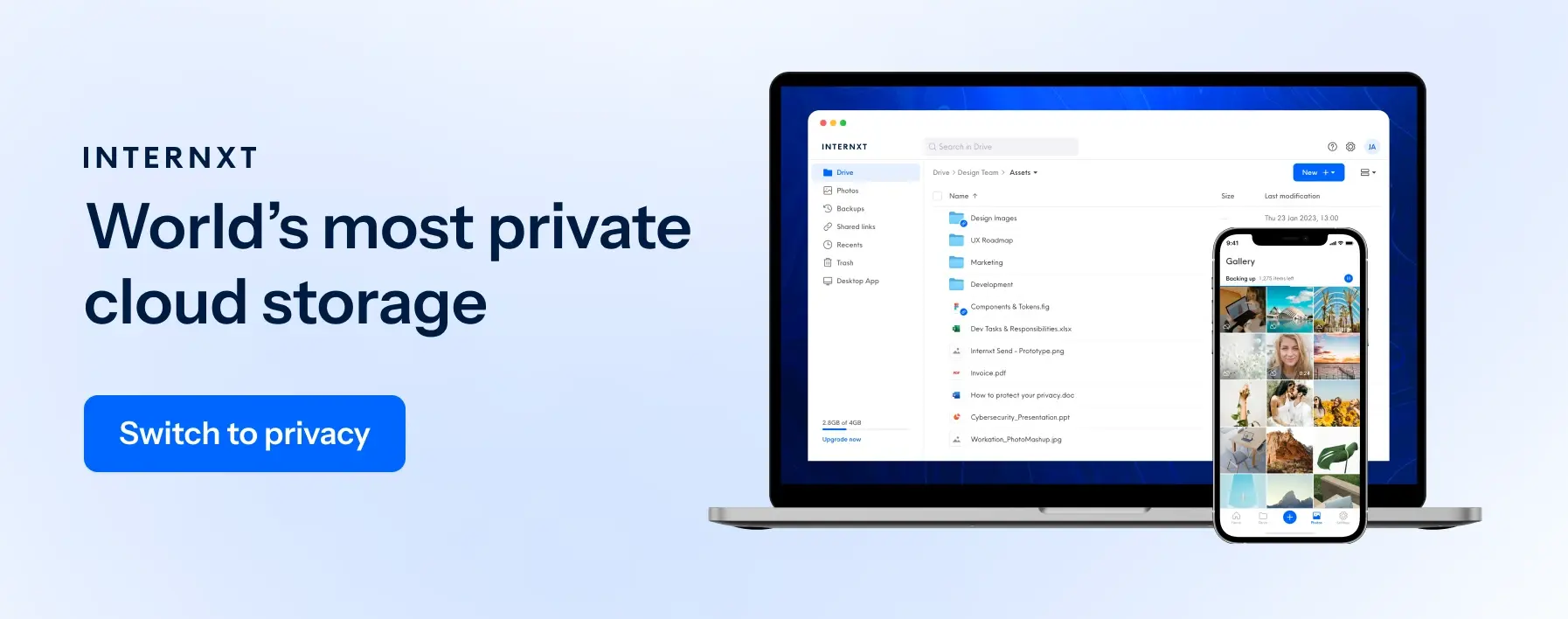Building a Strong Small Business Work Culture Focused On Cybersecurity

Small business owners have a ton of things to worry about, but cybersecurity should always remain a top concern.
Why? The Allianz Risk Barometer lists cyber incidents as the number one business risk in 2022, ranking it higher than the shortage of skilled workers, complications from the pandemic outbreak, and natural disasters.
You have certainly seen some huge brands, massive corporations, and public institutions become the subject of alarming headlines due to data breaches and other cybersecurity failures. But you think owning a small business reduces your risk. Who would target such a small, local company? Well, think again.
Accenture's Cost of Cybercrime Study reported that 43% of attempted cybercrime targets small businesses—and only 14% of the companies affected were adequately protected.
As cybercrime techniques race to develop, your company's investments in digital security will need to keep pace. But those investments will require more than protective software and an IT manager, and they will require constant vigilance, education, and maintenance.
Successful safeguards against cyber threats for small businesses require everyone employed by your small business to understand and embrace cybersecurity as part of your workplace culture. Showing up to do a day's work at your small business and applying best practices for spotting and preventing cybercrime must go hand in hand. Let's talk about how to make that happen!
Assess Your Business's Cybersecurity Needs
Establishing a detailed understanding of your current situation and needs is wise before investing in new systems or launching new initiatives.
Begin by defining what cybersecurity means for your organization and what threats you may be at risk for. Consider hiring a cybersecurity expert to conduct a health check-up to help speed up the process.
For instance, if you offer delivery services or online payment options, you may have sensitive consumer information that's at risk for spyware. Same as businesses managing optimized delivery routes may also handle data that needs protection.
If you're in sales, you might have valuable B2B lead scoring and competitor analysis data that could get leaked.
Spend some time carefully examining all of the aspects of your company and ask yourself some critical questions:
- What threats do we currently face?
- How have cyberattacks affected us so far? How could or should we have responded differently?
- What are our most vulnerable assets?
- What digital products, information, or protected access may be at risk? Which of those resources might be enticing to cyber criminals?
- What would enable each team member of our small business to help take responsibility for cybersecurity?
- What resources for combating cybercrime (time, personnel, software) do we already have, and how well are we using them? How can we improve?
Exploring your answers to the questions above can help you gain a clearer understanding of what cybersecurity means for your small business so you can set positive, measurable goals moving forward.

Provide Ongoing Cybersecurity Training and Resources
Your cybersecurity improvement plan can only succeed if you effectively communicate it to your employees. The people who make your small business run will need to know what types of threats exist and what red flags to watch for.
Resources for B2B cybersecurity
Create protocols for responding to common cybercriminal tactics such as email phishing, malware, and hacked passwords, and make sure that everyone who works with your small business understands them.
Your employees will also need to know what resources are available to them to improve cybersecurity and how to use them.
Cloud storage for business
Cloud storage and file sharing platforms are crucial cybersecurity resources for businesses to protect business data from leaks and breaches.
Many cloud storage providers are available, few offer business plans, and even fewer offer the full privacy and security of Internxt Drive for business.
With Internxt's business Standard or Pro plans, you and your team can access a secure platform for your business to share files securely, manage your teams, and manage the session for the best privacy and security for your organization.
Internxt encrypts all your business files directly on your device, meaning they are protected from hackers before they are uploaded to the cloud. Other business plans only encrypt files when they reach its servers, exposing sensitive information to data leaks.
Internxt encrypts all your business files directly on your device, meaning they are protected from hackers before they are uploaded to the cloud. Other business plans only encrypt files when they reach its servers, exposing sensitive information to data leaks.
For this reason, Internxt's security and privacy protocols make it the most secure cloud solution for your business.
Get started with Internxt's business plans with plans starting at:
- Standard: €6.99 per user/billed monthly/min 3 users/max 10 users
- Pro: €8.99 per user/billed monthly/min 3 users/max 100 users
Security protocols for businesses
Many organizations also require more advanced protection measures, like SSL certificates. If employees are prompted to visit a website from their work devices, they should know to check the status of the website beforehand.
For instance, an HTTPS protocol at the beginning of a website URL can help your employees know that a website is secure. Even, ensuring the security of our communication methods has become increasingly important. When it comes to VoIP providers, reliability is a key factor to consider.
Keeping your business cyber-secure will require a long-term, multi-faceted commitment. One training or workshop won't be enough.
As your company grows and expands, so will its vulnerabilities. Cyber threats will continue to develop and evolve as well. So, make sure to be vigilant toward new threats and always keep your employees informed and prepared.
Create Positive Norms Around Cybersecurity
Once you've identified and trained your staff on best cybersecurity practices and resources, you'll need to decide how to weave these practices into the daily life of your organization.
Here's what we recommend:
Be consistent
One way to achieve this is to ensure that adequate security behaviors are being practiced from the top down.
Everyone working for your company should observe everyone else, especially at the executive or leadership level, taking these protective measures seriously. This can help ensure that compliance expectations are respected and implemented.
Track progress together
Set company-wide goals for improving security. This could mean reducing the number of incidents in a month or sustaining a streak of days or weeks with zero security breaches.
Then, promote ways to monitor your progress together. For instance, tools like Best Notion widgets are ideal for sharing progress toward these goals in engaging ways. You can embed a chart displaying improvements in security performance from month to month into the company or department memos.
Or go wild and create a funny GIF for your organization's communication channel that relates to a cybersecurity guideline.
Finding creative ways to keep this issue at the front of your 'employees' minds can help them remember the safest actions to take when it matters most.
Discipline vs. culture
Some companies also use a system of incentives and disciplinary consequences to promote security protocols.
But to build a culture of cybersecurity, each member of your organization will need to understand the importance of these protections and commit to them individually. This can be achieved through collaborative learning.
When an incident occurs, whatever the outcome, debrief with your team. Talk about what went well and what could have been done differently.
Be open to sharing your own challenges with cybersecurity and celebrate successes together. Remember, instilling values produces more outstanding results than using fear or threats.
Keep Your Business Computer Systems Secure
To meet the high standards you've set for cybersecurity work culture, your small business will need to make sure that the systems it relies on to function are well protected.
You can help make this happen by creating a plan for keeping your company software current with updates and security patches. Use automated updates whenever possible and maintain a schedule for manual updates when needed.
If you're offering remote work positions, ensure your employees have suitable safety measures installed on their personal and work devices. Consider your equipment and facility needs, too.
If you run an application on a website, make sure to have a Web Application Firewall. These applications need protection to prevent application layer attacks, including cross-site scripting (XSS), SQL injection, and cookie poisoning, preventing headaches in the future.
Also, a colocation data center may be the solution if you store large amounts of private data and don't have the time or capacity to manage the required servers and IT hardware. This will free you and your employees from having to worry about the physical care of that equipment and focus on accessing and transmitting sensitive data in the safest ways possible.

Plan Ahead For Cybersecurity Breaches
A small business that's developed a culture of cybersecurity must still be prepared for incidents that may occur.
Be sure to create a detailed plan for how your company will respond to each type of potential incident: breaches, data loss, or service outages. Ensure that the appropriate members of your team are familiar with their roles in each response plan. Be ready and willing to update these plans as your organization grows and its needs evolve.
Test and analyze your incident response plans by conducting drills with your employees. This could mean a "tabletop" exercise, where you outline and discuss possible threatening scenarios and appropriate responses in a group setting.
You can also simulate threats like phishing emails or unidentified personnel attempting to access secure equipment.
After each response, break down what was successful and what wasn't. Consider using a team collaboration tool to house your simulations and group discussions. For instance, Plus offers a range of dashboards and extensions you can use to organize and share this information in engaging ways.
Use this information to continually improve your organization's cybersecurity processes.
Building a Cybersecurity Work Culture Takes Time
Like it or not, the daily risk of cyberattacks is a fact of life in today's digital landscape. But you don't have to live in fear.
Preparing to respond effectively to cybersecurity threats is a responsibility that everyone in your organization must share. You can create a work environment that helps make that happen by:
- Asking critical questions about your business's cybersecurity needs
- Identifying the most effective responses to threats and which resources your team will need to handle them
- Training your staff on how to access and implement those resources
- Committing to a workplace culture that values cybersecurity
- Choosing the best methods for securing your systems
- Planning to improve over time
The time and energy you invest into following these steps will pay you back many times over with peace of mind. That means more freedom to focus on growing your business, expanding your capacity, and smashing your goals.
To your small business success!

